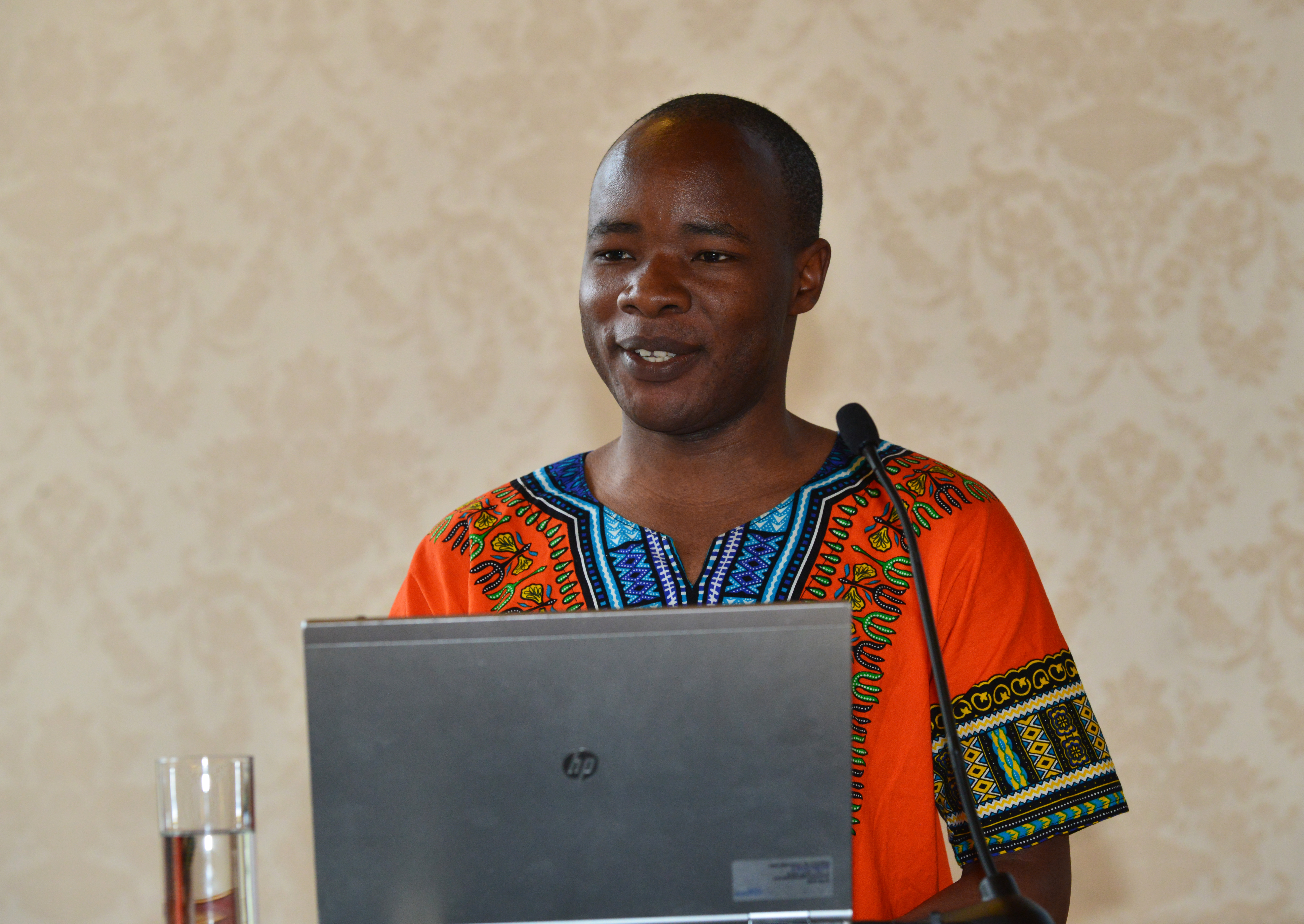

The R20 World Summit brought together expert knowledge, insights from practitioners in different sectors and interest groups in education, research and forestry development. In line with the Sustainable Development Goals (SDGs) and the Agenda 2063 of the African Union, the R20 World Summit Breakout Session fostered learning and widespread awareness and interest in the uptake and spread of forest conservation to mitigate climate change in Africa and the rest of the world.
The event was organized by the Austrian Federal Ministry for Sustainability and Tourism, the Austrian Federal Ministry of Education, Science and Research and the International Union of Forest Research Organizations. The R20 World Summit Breakout Session was held on 29th May 2019 in Vienna University, Austria and Kevin Wafula Nyongesa, a PhD student at the University of Natural Resources and Life Sciences (BOKU) and having published two scientific papers on fire management in Kenya, was selected as a youth speaker.
Youth message “Now is time to act”
In his speech “Now is time to act” Nyongesa emphasized that climate change is a complex topic, and young people in Africa should have the opportunity to learn about as many aspects of climate change as possible in schools, colleges and universities. African youth has been left out by government and other climate change stakeholders in the development and implementation of climate change policies at the local, regional and national levels. Africa has a fast growing population; the median age in Africa is 19.4, whereas in Europe it is 41.8 years. With 200 million people aged between 15 and 24, Africa has the youngest population in the world and the current trend indicates that this figure will double by 2045.
Forests and trees offer opportunities to reduce climate risks, but they are at risk themselves because Africa’s fast-growing population has increased pressure on forest resources over the past decades and forest resources become scarce on private and community land, the population has been turning to the neighboring protected areas for their livelihood resources leading led to the depletion, degradation, and increased wildfires within and near to the populated areas. The increased unsustainable use levels and patterns have occurred as a result of poverty, inappropriate management skills and weak management institutions. African ecosystems were already experiencing climate change because the shrinking of glaciers on Mt. Kilimanjaro and Mt. Kenya has been witnessed. Nyongesa concluded his speech by inviting governments, donors, NGOs, education and research institutions to act and work with communities to:
- Promote and integrate youth into local and national programmes, planning and decision-making forums on climate change,
- Improve local capacity by providing support and climate change resources to youth groups, students, lecturers and activists in the formal and informal education system to ensure that recipients are well trained, informed and equipped to combat climate change challenges.
- Jointly develop youth-specific participation programmes that address gender, cultural, language and other barriers.
- Enable more young people to get education and do research on climate change so that together we can combat climate change in the world.
Poster presentation
Furthermore Kevin Nyongesa presented a poster entitled “Integrated Fire Management (IFM) for Mount Kenya Forest and National Park to mitigate climate change”. Fire is used by communities living around Mt. Kenya Forest and National Park (MKFRNP) to facilitate the growth of new grass for livestock, prepare farmlands, control weeds, pests and parasites, hunt and control wildlife, produce charcoal and harvest wild honey. His PhD research shows that most of the wildfires in MKFRNP are caused by humans and there is no IFM policy in place in Kenya that aims to address both damaging and beneficial wildfires by evaluating and balancing the associated risks.
Kenya’s fast growing population, the changing climate, socio-economic demands and the low level of awareness regarding fire management could increase the number of human caused fires in the future. Even though the Kenya Forest Service (KFS) and Kenya Wildlife Service (KWS) have been doing fire prevention and suppression in MKFRNP, the termination of donor funding, limited funds to tackle wildfire issues and retrenchment of human resources within the departments has seriously reduced the KFS’s and KWS’s capacity to effectively suppress and combat wildfires.
During his poster presentation, he explained how the proposed IFM framework will help communities and resource managers in implementing cost-effective approaches to prevent damaging fires and maintain desirable fire regimes through the participation of the main stakeholder groups in the formulation and implementation of IFM activities. Furthermore he presented recommendations that need to be followed to prevent wildfires. He said we need to consider fire danger rating and weather conditions before lighting fires; inform local relevant offices immediately there is a wildfire outbreak; inform local authorities about prescribed burning activities in advance; and involve all land users in firefighting trainings.
Kevin Wafula Nyongesa is a PhD student the Institute of Silviculture at the University of natural Resources and Life Sciences (BOKU) and has already published two scientific papers on “Fire Management in Mount Kenya: A Case Study of Gathiuru Forest Station” and “Evaluating Management Strategies for Mount Kenya Forest Reserve and National Park to Reduce Fire Danger and Address Interests of Various Stakeholders”. He has worked on research projects like FIREMAPS that aimed at developing fire danger maps to identify fire hot spots and support fire management in Mt. Kenya Forest. Komesha Moto Project that aimed at improving management practices in grasslands, farmlands, forests, watersheds and biodiversity hot spots in fire maintained ecosystems under climate change in Kenya. He has also published a book with Akademikerverlag entitled “Fire Management in Forests and National Parks of Kenya: Case studies at Kakamega, Mount Elgon and Mount Kenya Forest and National Park in Kenya. Kevin is a part-time lecturer at Egerton University in Kenya. He is a self-motivated a leader and is such a speaker that often leaves his students and audience inspired.
